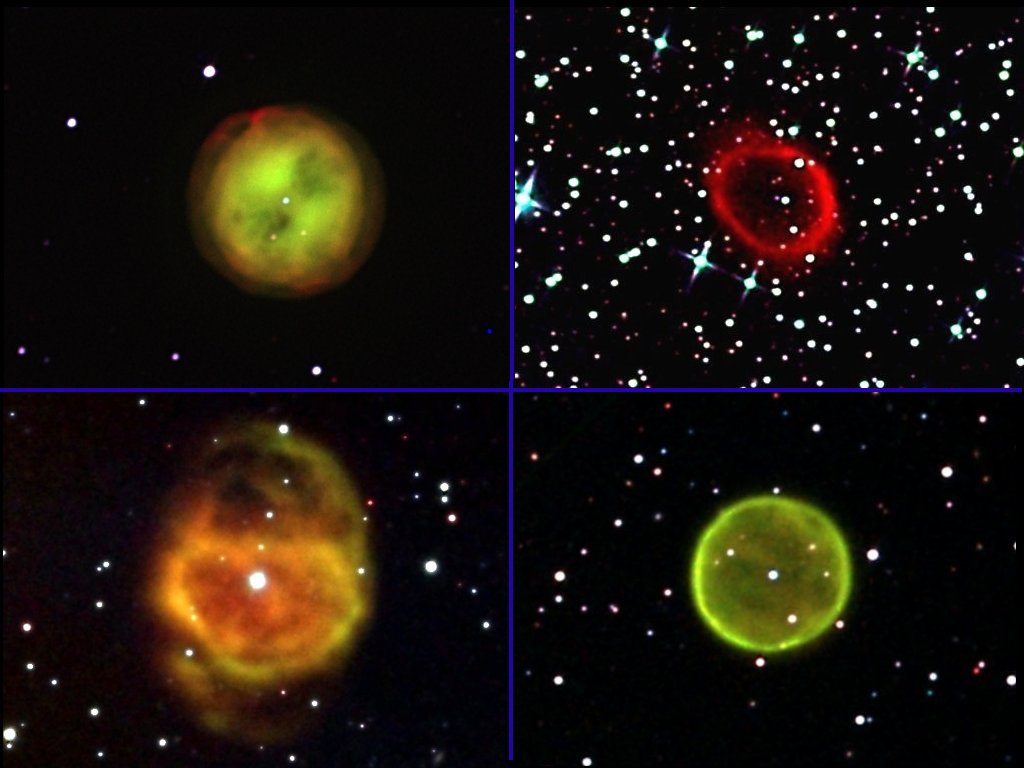Planetary Nebulae
|

|
|
Here is a glimpse at the distant future of our own Sun and solar system.
Once stars like our Sun have exhausted all of their available fuel, they
expand to huge diameters (as big as the orbit of the Earth). Then, their
outer layers are gently ejected into space. The remnant hot core energizes
the surrounding gas, producing the "planetary nebula" - so called not because
they involve planets, but because they look similar through a telescope.
This is a very brief
phase - lasting just 100,000 years, after which the nebula disperses and the
core cools.
The fate of the planets surrounding these four stars is unknown - either
they spiralled into the star as it grew and were incinerated, or they
survived beyond the danger zone, and now circle the rapidly cooling cinder
that was once their Sun.
In these images, the greenish tinge is given by the light of
glowing oxygen gas, while red signifies the light from hydrogen.
The reason why some planetary nebulae are so asymmetrical remains a
mystery... the solution to which will give us details on the circumstances
surrounding their demise, but could perhaps result from the motion of planets
as they interact with the gas.
|
|
